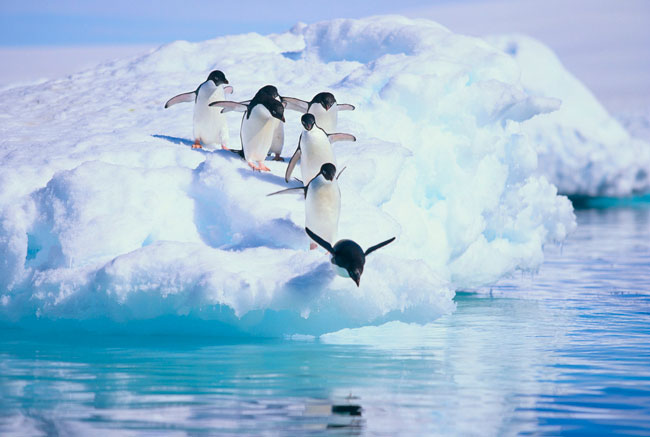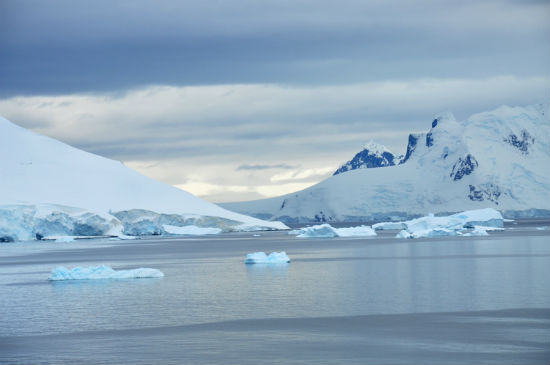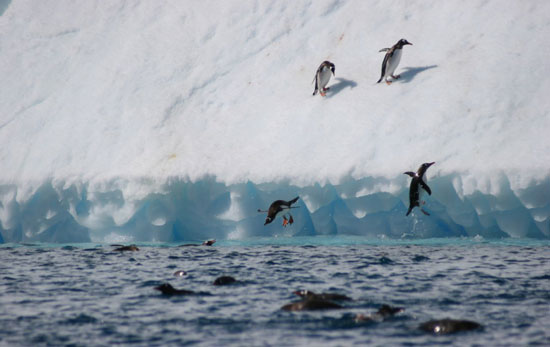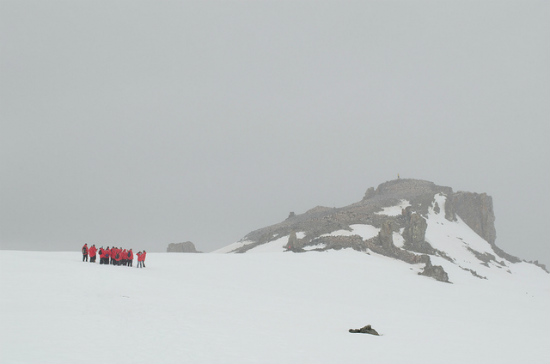

Drake Passage Off the Coast of Argentina
“Ladies and gentlemen,” Captain Oliver announces, “there will be no welcome party tonight. My apologies for the rough seas. We will reschedule when everyone feels better.” Our ship has left Ushuaia Argentina, nicknamed “End of the World” for good reason. We’d hoped to celebrate our first night traveling to Antarctica.
But the Drake Passage has other plans. High winds and forty-foot waves force us into our cabins. Our dinner consisted of Bonine, Dramamine and Scopolamine. As our ship pitches and rolls like a bathtub toy, we fall into bed. In the empty dining room, china crashes to the floor.
I dream of Captain James Cook, a man of tenacity and insanity, who explored more of the Earth’s surface than anyone in history. His three voyages from 1768-1780 took him from Tahiti to Siberia, from Easter Island to the Great Barrier Reef. In 1772, he left Cape Town, sailing south for 117 days toward Antarctica.
“Rigging and sails hung with icicles,” Cook wrote in his journal, as the Resolution plunged through “pinching cold.” Crossing the 71st parallel in January 1773, his ship was deterred by pack ice, just 75 miles from the Antarctic continent.
Cook crossed the Antarctic Circle a second time in December 1773, and a third time Jan. 26, 1774, some 150 miles off Thurston Island, just off the Walgreen Coast of Marie Byrd Land. Again an unbroken field of sea ice in the Amundsen Sea stopped him.
“I, who had ambition not only to go further than any one had been before, but as far as it was possible for man to go,” he wrote, “was not sorry at meeting with this interruption; as it in some measure, relieved us; at least shortened the dangers and hardships inseparable from the navigation of the southern Polar Regions. Since therefore we could not proceed 1 inch further to the South, no other reason need be assigned for my tacking and standing back to the North.”
The first navigator to cross the Antarctic Circle, Captain Cook never made it to the white continent. Would we? As our ship pitches through the terrible Drake Passage, we are awake…. wondering.

Penguins on Aitcho Island
“Your worries are over ladies and gentlemen,” our Captain announces over the loudspeaker. “We have completed our 621 mile journey through the Drake Passage. In thirty minutes, zodiacs will motor you to Aitcho Island. Welcome to Antarctica.”
I pull on wool pants, waterproof pants, a thermal undershirt, a wool sweater, rubber boots, a hat and gloves. Over it all a boxy red parka.
Joining the other 150 red jacketed passengers from England, Austria, Switzerland, India, the Caribbean and the U.S., we climb into waiting zodiacs and minutes later out onto a snow covered beach. Our welcome committee of three penguins wave hello.
Trudging up to the island’s peak in knee-deep snow, thousands of orange beaked gentoo penguins sit on egg nests, surrounded by piles of stinking guano. Wings back, fat bellies extended, they waddle like comedic cartoon characters. One partner in each pair keeps the egg warm; the other steals sticks and rocks from neighboring nests.
“Sweet,” exclaims Shirley Hagger, a passenger from London. “Just like a hubby bringing home perfume and flowers to the wife. Must be in trouble, that one.”
Five hundred penguins madly flap their wings, point beaks skyward and break into a high-pitched choral din. Behind the penguin colonies, 2000 lb. elephant seals snore in unison. It all makes perfect sense. Wearing overstuffed red jackets, we’re quite penguin like ourselves. Exhilarated to finally arrive on the white continent, we applaud their performance.
 Paulet Island
Paulet Island
“Good morning, ladies and gentlemen, this is your Captain,” our cabin loudspeaker spurts to life at 6 a.m. “On starboard side we have an emperor penguin. In my fifty-one Antarctic visits, this is only the second time I’ve seen one.”
I open my cabin window to a world of white ice. Huge jagged chunks shaped like shark’s teeth float in the grey mist. A magnificent Emperor penguin is alone on one iceberg, watching our ship drift past.
“Emperors move southward on the sea ice,” our Captain continues, “Then swim to their colony sites. They seek out last year’s mate, calling for them. Once they’re together, they raise a new family.”
Suited up in our red parkas, we drop into zodiacs for an iceberg tour in a pelting cold rain. White on top, aquamarine underneath, they’re oversized jewels. One colony of Adelie penguins seems delighted to meet us. Wings flapping, squawking, they hurl onto their stomachs, tobogganing into the sea.
Back on our ship, we feast on omelets, flaky croissants and fresh fruit. Hardly what Capt. Cook and his crew ate on their Antarctic journey: they subsisted on weevil-ridden biscuits, salt beef and pork. After food ran out, they survived on sea lions, seals, albatrosses and penguins. “I cannot say they are good eating,” Cook drolly wrote.
Our Austrian chef has more imagination. With a cosmopolitan mix of passengers from the United States and Europe, he also has his culinary challenges.
“Europeans like bratwurst, chicken legs and cake,” he explains. “Americans prefer hamburgers, chicken breast and pumpkin pie. Everyone likes vegetables, salad, bread and ice cream sundaes, so I try to please everyone with our menus.”
Provisioning this ship is complex: fish, meat and chicken are frozen in Seattle and shipped by freight to our embarkation port. Fresh fruit and vegetables are purchased in Buenos Aires, Argentina, and then flown to the ship. “I ordered 7,000 eggs,” the chef smiles, “not to mention hundreds of bottles of wine, liquor, mineral water and juice.”
So while Captain Cook and his men survived on sea lion shish kebab and penguin stew, we dine on succulent halibut, fresh spinach salad, homemade bread and delicious cherry pie.

Storms and an Antarctic Bath
Aboard the Resolution, Cook’s crew has endured horrific storms. We are no exception. After a serene day cruising alongside exquisite icebergs, tonight we experience 55 mph gale force winds and 70 ft. waves. Our cabin becomes a Salvador Dali nightmare. Doors fly open, glasses in the bathroom shatter on the floor, clothing and shoes slide across the room. Nervously I recall The Titanic, smashing into an iceberg, sending passengers to icy depths. I swallow some bonine and try to sleep.
“Ladies and gentlemen,” Captain K. announces in his most soothing voice. “I do apologize for the rough seas. Try to relax. We know this storm can’t last forever.”
I’d observed Captain K. at work that day on the bridge. A slim gentleman, with short brush cut hair, piercing dark eyes and a boyish smile, he exudes the absolute confidence of a man who knows his ship. He’s explored Antarctica fifty-one times, why should I worry?
As promised, next day is calm and clear. We’ve anchored offshore Deception Island, a volcanic island still active since her last eruption in 1969. British and Norwegian whaling stations are still standing since 1911.
The ship crew has dug us a shoreline hot springs swimming pool. We peel off our red parkas, wool sweaters, waterproof pants and rubber boots down to swimsuits and run into the steaming water. The temperature is bracing, but the steamy springs are heavenly. Last night’s storm is forgotten and we frolic like kids in the tub.
Farewell Antarctica
Today the sun glistens on distant glaciers. Walking Half Moon Island among chattering chinstrap penguins, we shoot photos and share favorite moments from this unforgettable adventure. I’m thinking how close Captain Cook got to Antarctica back in 1773.
His devastation in having to turn back. We too have endured rain, hail, snowstorms, gale winds and high seas to explore just a minuscule part of the white continent, in all her stark magnificence.
Strolling the black sand beach, a perfect rainbow arches over Half Moon Island. Captain Cook smiles on all of us, pleased with our tenacity, our insanity.
If You Go
The International Association of Antarctica Tour Operator’s mission is to promote safe travel options to Antarctica. https://iaato.org/home
Author Bio: Sharon Spence Lieb has authored 300+ travel features on adventure, nature and offbeat luxury for magazines, newspapers and online publications worldwide. She is the author of 7 travel guidebooks. Enjoy her music video on YouTube, “Hey Mr. Polar Bear.” Sharon is a member of SATW and NATJA. Email her: [email protected]
